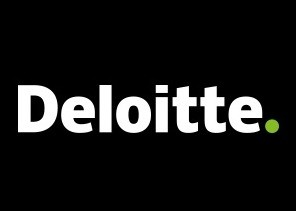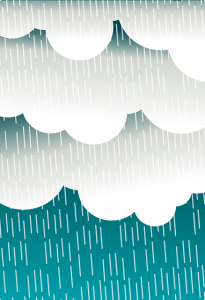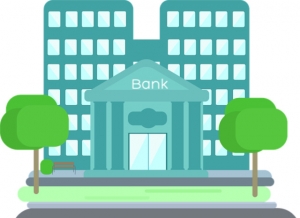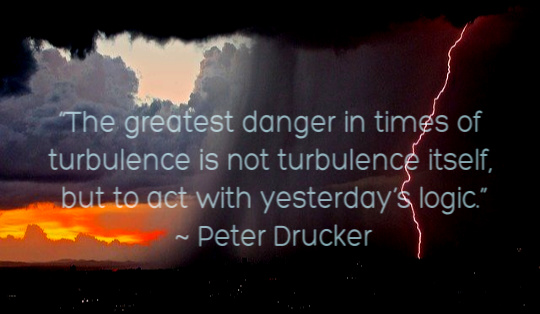The fast-changing habits and needs of consumers, partly shaped by the coronavirus pandemic, will require banking and financial service leaders to adjust their services and their way of thinking if they want to build resilient organizations that thrive in the near future.

In an intriguing new report – “Consumer Banking Remade by COVID 19: Scenarios for Resilient Leaders”, Deloitte explores how the pandemic could refocus and redirect consumer banking services in the next one to three years.
Two critical uncertainties will drive consumer response post-COVID-19: the severity of the pandemic and its progression, and the level of international cooperation between countries in finding solutions. A roller coaster of seasonal waves of coronavirus or a second big wave could have a dramatic impact on consumers and how banks continue to play an essential role in meeting their customer needs going forward.
A World Remade: Four Scenarios
Deloitte offers a view of how businesses and society could develop over the next one to three years as the US navigates the potential long-term implications of the global pandemic. In four “What if?” scenarios, Deloitte suggests potential pandemic outcomes and how consumer behaviors will change and their potential impact on the banking industry.
The result is a fresh way that leaders can think about developing responsiveness and resilience within their organizations in order to better meet new potential challenges.
The Passing Storm

First, is the “Passing Storm.” In this scenario, after a slow start, government and health systems are increasingly able to respond and there is some global cooperation to help restore public trust. Despite being short-lived, the pandemic causes longer-term economic impact, and governments will be challenged to reverse the impact on small to midsize business and lower to middle-income individuals in particular.
There is a potential economic rebound by the end of 2020 and beginning in 2021. Consumers return quickly to the status quo with less long-term impact and other than some weak banks struggling during the crisis, banks also revert to pre-crisis levels. This is the optimistic scenario that the Trump government is desperately hoping for.
Good Company

In the second scenario – “Good Company” – Deloitte imagines a longer-term pandemic impact where public-private sector partnerships emerge. These could take the form of “pop-up ecosystems” as businesses across industries partner and innovate to meet emerging critical needs. It’s possible that social media companies, platform companies, and tech giants could gain new prestige through a form of “stakeholder capitalism” where they are more empathetic to how they can best serve their customers, shareholders, and employees to rebuild after the crisis.
This implies an economic recovery later in 2021 along with a rise in corporate responsibility. In this scenario, consumers would grow more comfortable with sharing data as trust grows. The banking sector would likely grow more crowded with neobanks, new fintech startups, and some industry consolidation.
Sunrise in the East

A “Sunrise in the East” scenario projects a severe COVID-19 pandemic unfolding inconsistently around the world. In this model, “China and other East Asian countries manage the disease more effectively, whereas Western nations struggle with deep and lasting impacts – human, social, and economic – driven by slower and inconsistent responses.” This scenario foresees a shift in power towards the East where China, Taiwan, and South Korea’s centralized governments’ response becomes a sort of “gold standard.”
Economic recovery would happen faster in the East but generally also be a slower, longer-term recovery appearing later in 2021 in western nations. Bank customers are likely to be less loyal and more actively searching for better offers and more personalized customer service. Deloitte also foresees new platforms gaining in popularity as well as foreign banks exploring allegiances, mergers, or acquisitions.
Lone Wolves

If you’ve enjoyed binge-watching any zombie apocalypse movies, you’ll appreciate the fourth scenario Deloitte calls “Lone Wolves” featuring “a prolonged crisis as waves of disease rock the globe for longer than anyone was prepared for. Mounting deaths, social unrest, and economic freefall become prominent. The invisible enemy is everywhere, and paranoia grows.” The result is more countries adopting isolationist policies and an increase in government surveillance and monitoring biotechnology.
In this turbulent tale, bank customers will seek transactions that are mostly contactless impacting many in-person businesses. Global supply chains will be heavily disrupted and need rebuilding. Consumers would continuously search for the best yield in every banking service, putting pressure on profitability. There’s potential for the banking industry to shrink dramatically due to a prolonged crisis and many banks could struggle to navigate poor long-term credit performance. This might result in the rise of protectionist policies and regulations limiting foreign involvement.
This last scenario is not a happy one. Let’s hope we’re not left howling at the moon.
10 implications for US consumer banking
Regardless of the actual scenario, Deloitte identifies 10 implications for consumer banking in the US.

Profits will be under pressure, resulting in the need for a laser focus on cost-to-serve. While banks enable more self-service, human connections through call centers and branches will remain important. Digital acceleration will be critical in order to reduce costs, extend reach, and improve efficiencies. Remote work will remain a reality for banking and many other businesses.
No-touch experience will grow. “Contactless payment products, artificial assistants, and their supporting capabilities (eg cybersecurity) will see greater demand and investment; and digital experiences will become more human,” Deloitte predicts.
Expect retail and big tech to continue their entry into consumer financial services with growing merger and acquisition potential within the fintech sector Banks need to be vigilant about customer service, retention, and the cost of losing customers. Branch makeovers will be part of an effort to innovate, transition to specialized advice and service centers, introduce new services and yet retain customers where branches previously operated.
With growing interest in contactless channels, challenger banks have a make or break opportunity to attract new customers, but can they navigate the credit cycle? Finally, Deloitte foresees a shift within tier one cities (New York, LA) to their suburbs as well as growth in tier two cities like Charlotte and Orlando.
The next six to nine months

Deloitte says banks have seven key activities to focus on in the next six to nine months
The banks that will emerge stronger despite the pandemic will be those who support their communities, help customers outlast the crisis, proactively review and manage their credit portfolios, enhance midterm profitability, continue to advance technology improvement and investment, and redefine their call center strategies.
Sounds simple but hey, consultants get paid to offer advice, and clients carry the luggage.
All in all, it’s an exciting time for financial services across the US and around the world.
Got real leadership?
The Deloitte scenarios do encourage the financial industry and business leaders in every sector to consider which short to midterm future they expect for their organization. Are you ignoring any potential scenarios and impact? What would you do differently in order to thrive regardless of the scenario?

The final critical question to ask is “What capabilities, partnerships, segments, and workforce strategies do you need to learn more about?”
We’re reminded of business guru Peter Drucker’s famous quote from Managing in Turbulent Times: “The greatest danger in times of turbulence is not turbulence itself, but to act with yesterday’s logic.”
This is the kind of critical strategic thinking that real leaders in the payments industry, financial services, business, and government need to do in order to plan for the future. I’m not sure most of us aren’t simply crossing our fingers, closing our eyes, and hoping that we’re dealing with a “passing storm.”
It’s definitely food for thought.

